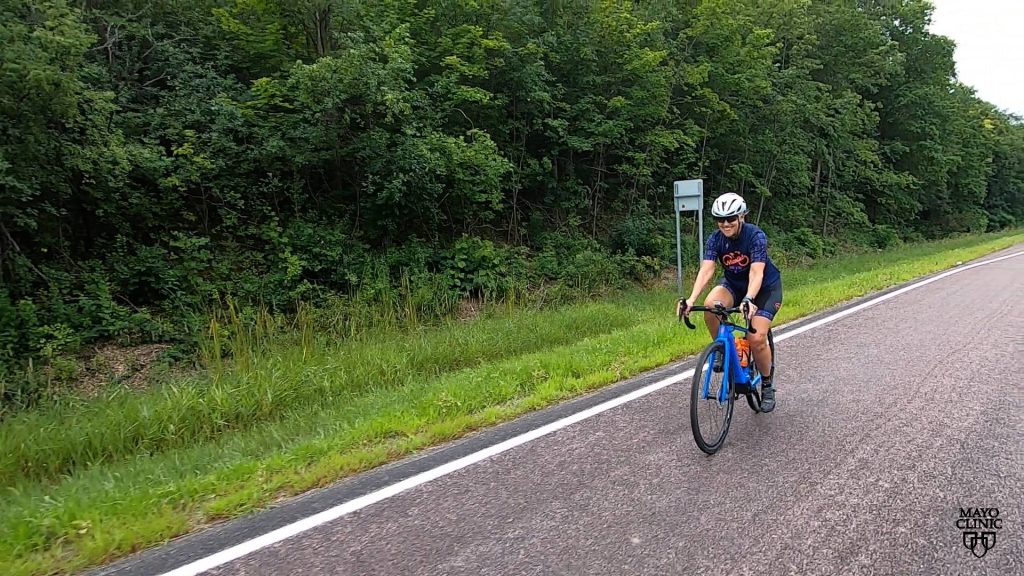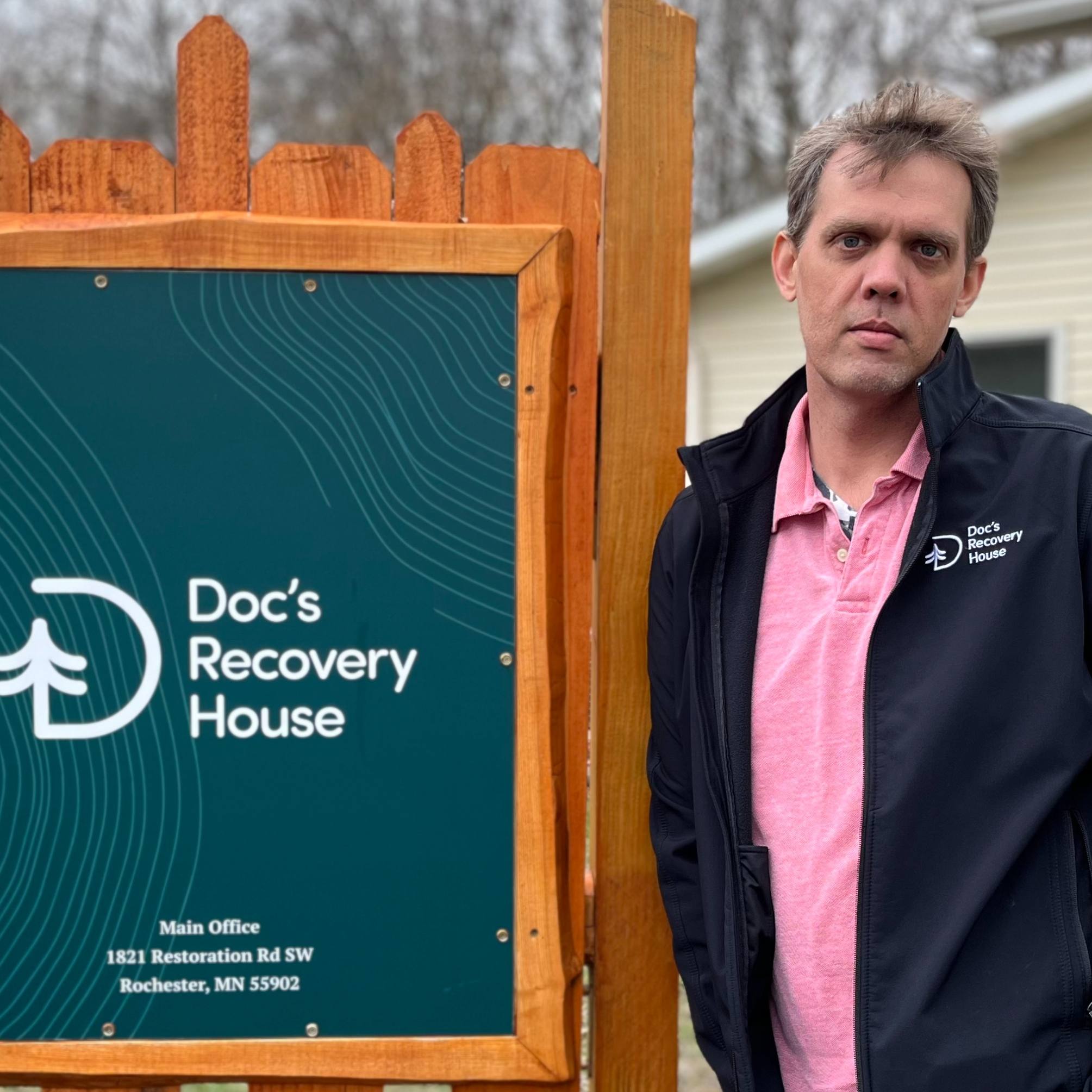
It's a relatively uncommon and serious cardiovascular condition with symptoms that often mimic a heart attack or stroke. It's called aortic dissection. And if not detected early or treated immediately when symptoms occur, it can be fatal.
Aortic dissection is an equal opportunity disease — affecting men and women — even those who lead an active, healthy lifestyle, like cyclist Becky Brooks.
Watch: Cyclist changing gears after heart health scare
Journalists: Broadcast-quality video (3:05) is in the downloads at the end of this post. Please courtesy: "Mayo Clinic News Network." Read the script.
"I do feel like I'm flying. And the hum of the tires on the pavement is just like music and meditation," says Brooks, who has a passion for pedaling. "It's freedom. It's joy. It's exertion."
The 66-year-old from Mankato, Minnesota, has won national titles in long-distance cycling.
"I don't think of biking as a workout. I think of it as a ride. And I don't do it because I want exercise. I do it because I want to ride," she says. "After all I went through, I thought I could never ride the way I used to ride. It was the 24th of April 2021."
As Becky prepared at home for a bike ride, she felt a horrific pain in her chest.
"Stabbing — I mean, it felt like a knife inside," Becky says. "So I said to my husband, 'Shall I call the cardiologist?' And he goes, 'No, we should call 911.' And thankfully, we did."
It wasn't a heart attack.
"My aorta dissected," she says.
Quickly flown to Mayo Clinic in Rochester, Minnesota, Becky was unconscious and in dire need of emergency surgery.
"Certainly, when I met Becky, it was a very dramatic scene," says Dr. John Stulak, a Mayo Clinic cardiovascular surgeon. "If there's one analogy you can make to the diagnosis of an aortic dissection, it is a ticking time bomb."
The cardiovascular surgery team at Mayo, led by surgeons Dr. Stulak and Dr. Alberto Pochettino, rapidly prepared for what would be an eight-hour procedure to repair the dissected aorta.
"The aorta is the main blood vessel that leaves the heart. It carries blood to all of our tissues and organs," says Dr. Stulak. "Blood now instead of being in the middle of that tube, gets into the wall of the aorta, and then kind of does exactly what the term says. It dissects along in through the wall of the aorta. And as time goes on, it could pop and the patient can bleed to death."
The surgical team removed the damaged aorta and replaced it.
"It's a woven, artificial tube that the patient has. And it's just like if a pipe were damaged in your house, you would splice that out and put in a new piece of pipe. And that's basically what we did," says Dr. Stulak.
Now, more than a year later, Becky, a retired English professor and accomplished author, is working on her newest novel and feels blessed to have this next chapter in life.
"I feel great!" she says.
Her racing days are done, but she is back on a bike — an e-bike.
"It's a bike that gives assist when you're pedaling," Becky says. "I took it out on the road, and I started to cry. Like, oh my gosh, I can do this again! I can go hard without putting all that stress on my body."
"There's not an hour goes by that I don't appreciate being alive. I mean, I could have been dead," she says. "I'm here. I'm so grateful."







